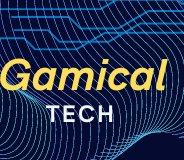
The Internet of Things (IoT) has revolutionized various industries by enabling connectivity between devices, enhancing efficiency, and providing valuable data insights. However, the rapid adoption of IoT technology also brings forth significant challenges and security concerns that need to be addressed to ensure a safe and effective IoT ecosystem.
1. Security Vulnerabilities
a. Insecure Devices
Many IoT devices lack robust security features, making them susceptible to cyberattacks. These devices often have minimal processing power and memory, limiting their ability to implement strong security protocols.
- Weak Passwords: Default passwords are common in many IoT devices, allowing hackers to gain easy access if users do not change them.
- Unpatched Software: Manufacturers may neglect to provide regular updates, leaving devices vulnerable to known exploits.
b. Data Breaches
The massive amount of data generated by IoT devices poses a significant risk if not adequately secured.
- Sensitive Data Exposure: IoT devices often collect personal information, health data, and sensitive business information, making them attractive targets for cybercriminals.
- Cloud Security Risks: Many IoT devices rely on cloud services for data storage and processing, increasing the risk of breaches if these services are compromised.
2. Interoperability Issues
The diverse range of IoT devices and platforms can lead to interoperability challenges, complicating their integration into existing systems.
- Lack of Standards: With no universally accepted standards for IoT communication and data formats, devices from different manufacturers may struggle to communicate effectively.
- Vendor Lock-In: Organizations may become reliant on specific vendors, making it difficult to switch to better or more secure options later.
3. Scalability Challenges
As IoT adoption grows, scalability becomes a crucial consideration.
- Network Congestion: An increasing number of connected devices can lead to network congestion, affecting performance and reliability.
- Infrastructure Limitations: Many existing infrastructures may not be equipped to handle the vast amount of data generated by IoT devices, necessitating significant upgrades.
4. Privacy Concerns
The pervasive nature of IoT devices raises serious privacy issues.
- Constant Surveillance: Devices such as smart cameras and home assistants can intrude on personal privacy, as they often record or transmit data continuously.
- Consent and Control: Users may not fully understand how their data is collected, stored, and used, leading to concerns about consent and control over personal information.
5. Data Management and Analysis
The sheer volume of data generated by IoT devices can overwhelm organizations.
- Data Overload: Analyzing and deriving actionable insights from massive datasets can be challenging, especially without advanced analytics tools.
- Quality and Accuracy: Ensuring the accuracy and quality of data collected from various devices is crucial for making informed decisions, but can be difficult in a diverse IoT ecosystem.
6. Regulatory Compliance
With increasing regulatory scrutiny on data protection and privacy, organizations must navigate complex compliance landscapes.
- Data Protection Regulations: Laws such as the General Data Protection Regulation (GDPR) impose strict requirements on data handling and privacy, which can be challenging to implement across various IoT devices.
- Industry-Specific Regulations: Different industries may have specific compliance requirements, complicating the deployment of IoT solutions.
Strategies for Mitigating Risks
To address these challenges and security concerns, organizations can adopt several strategies:
- Implement Strong Security Protocols: Enforce strong authentication methods, regular software updates, and encryption to secure IoT devices and data.
- Establish Standardization: Advocate for industry-wide standards to enhance interoperability and facilitate easier integration between devices and platforms.
- Focus on Privacy by Design: Incorporate privacy considerations into the design and deployment of IoT solutions to ensure data protection and user consent.
- Invest in Advanced Analytics: Utilize machine learning and AI to analyze large datasets effectively, ensuring timely and accurate insights.
- Regular Security Audits: Conduct regular audits and assessments of IoT devices and networks to identify vulnerabilities and ensure compliance with security standards.
Conclusion
While IoT technology presents tremendous opportunities for innovation and efficiency, it is essential to address the inherent challenges and security concerns to maximize its potential. By implementing robust security measures, advocating for standardization, and focusing on data privacy, organizations can navigate the complexities of the IoT landscape and build a safer, more secure connected environment.
visit: gamicaltech.com
